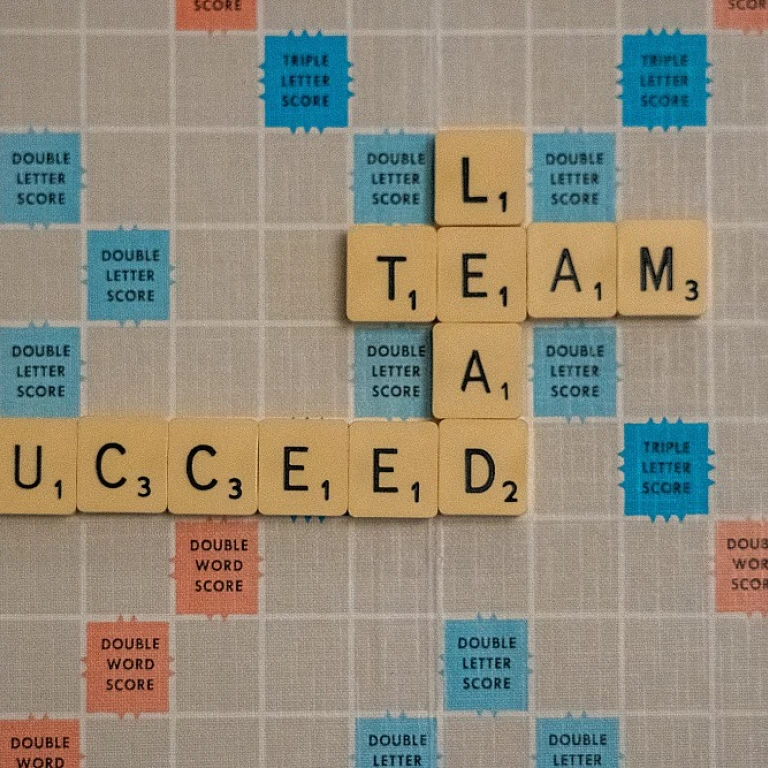The Role of Talent Assessments in Identifying Skills Gaps
The Contribution of Talent Assessments to Uncovering Skill Disparities
The role of talent assessments in modern business environments is pivotal, serving as a bridge to identify and address skills gaps within organizations. By focusing on talent assessments, businesses can gain critical insights into their workforce capabilities and potential, bolstering the hiring process with data-driven decisions.
Using talent assessments allows organizations to systematically evaluate the strengths and weaknesses of candidates and employees. Through various assessment tools, such as cognitive ability and personality assessments, businesses can learn more about job-specific and leadership traits. This information is invaluable in informing leadership development, succession planning, and talent management strategies.
Skill disparities often go unnoticed in the absence of robust assessment frameworks. Implementing talent assessments helps identify specific skills that need enhancement or development. Organizations are better positioned to tailor their training programs, fostering a dynamic workforce adept at meeting evolving job demands. This in-depth analysis not only aids in hiring potential employees but also in improving organizational development strategies.
Moreover, the strategic use of talent assessments contributes to an organization's overall business strategy by maximizing each candidate's potential. Ultimately, talent assessments are crucial as they provide a comprehensive understanding of where gaps exist, allowing leadership to make informed talent decisions.
For a deeper dive into understanding the "role of an analytical task sheet,” which aids in detailing task-specific requirements and helps in bridging the skills gap, visit
this insightful article.
Types of Talent Assessments and Their Applications
Exploring Various Methods to Uncover Potential
In the quest to bridge the skills gap, talent assessments have surfaced as a pivotal tool. These assessments serve multiple purposes, from understanding a candidate's current capabilities to predicting their future contributions to a business. The variety of assessment methods available reflects the multifaceted nature of skills and competencies required in today's job market.
- Cognitive Ability Tests: These assessments measure a candidate's potential to perform specific tasks and solve problems. Cognitive tests are vital for understanding how applicants process information and adapt to new situations.
- Personality Assessments: Insight into personality traits can help identify strengths and weaknesses that affect job performance and team dynamics. Personality assessments are crucial in succession planning and aligning individuals with organizational culture.
- Job Simulations: These assessments create realistic scenarios to evaluate how prospective employees might handle actual work situations. They are particularly useful in testing job-specific skills and decision-making capabilities.
- Leadership Tests: Potential leaders require an array of skills, including strategic thinking and people management. Leadership development programs often start with assessments that pinpoint areas for growth.
These assessment tools provide critical data-driven insights into candidate suitability and potential for development. By utilizing a well-rounded assessment framework, organizations can make informed talent decisions, enhance their hiring process, and invest in high potential individuals.
For readers interested in delving further into strategic methods to bridge skills gaps, exploring
effective outskilling strategies is a valuable next step.
Implementing Talent Assessments in Your Organization
Embedding Talent Assessments for Effective Skills Evaluation
To effectively bridge the skills gap, implementing talent assessments within your organization is crucial. This process begins with clearly defining the skillsets required for various roles and identifying the specific skills your organization needs to thrive. By integrating these assessment tools into your hiring and development strategies, you can significantly improve talent management practices.
- Understand the importance of aligning assessment tools with your organizational goals to create a seamless fit between existing and potential employees and the roles they're expected to fill.
- Utilizing cognitive ability tests and personality assessments provides valuable insights into a candidate's strengths and weaknesses. Gathering this data informs your hiring and talent decisions.
Implementing assessments requires focusing on both the practical and strategic levels of your organization. On a practical level, standardize the process by integrating these tools into your existing hiring process, development programs, and succession planning. Strategically, use assessments to identify high potential employees and develop leadership programs tailored to specific skills gaps.
Incorporating insights from
a skills development facilitator ensures that talent assessments are not static but adapt as the business evolves and new challenges emerge. Adoption of a robust
assessment framework enables real-time data driven decisions about potential candidates, aligning talent with your business needs.
Continuous feedback loops are essential in refining these assessments. Encourage leadership to stay engaged and learn from the insights generated, while fostering a culture where employees feel valued and supported in their growth and development. This not only helps in filling present gaps but also prepares the organization for future skills requirements.
Challenges in Using Talent Assessments
Overcoming the Hurdles of Talent Assessments
Implementing talent assessments in an organization is not without its challenges. While these tools offer valuable insights into the skills and potential of candidates, there are several obstacles that organizations must navigate to maximize their effectiveness.
Firstly, one significant challenge is the selection of the right assessment tools. Organizations need to choose assessments that align with their specific skills requirements and job-specific needs. Whether it’s cognitive ability tests or personality assessments, selecting the appropriate tool can make or break the hiring process. It requires a deep understanding of the organization’s leadership development and succession planning goals to make informed talent decisions.
Another challenge is ensuring the reliability and validity of the assessments used. Without accurate tools, the data-driven results from these tests can lead to misguided hiring decisions. It’s critical for businesses to evaluate the strengths and weaknesses of potential employees accurately. By investing time in understanding the metrics and frameworks of each assessment, companies can ensure their tools are providing reliable insights.
Furthermore, the implementation process itself can be time-consuming and resource-intensive. Organizations must be prepared to invest in training their HR teams and leadership on how to effectively administer and interpret these assessments. This involves learning how to integrate assessment data into their hiring practices and talent management strategies.
Finally, there’s the challenge of overcoming biases in assessment results. Ensuring diversity and inclusivity within hiring decisions requires critical attention to how assessments are conducted and interpreted. Organizations must strive to create an unbiased framework that evaluates candidates based solely on their potential and relevant skills.
Overall, while the challenges of using talent assessments are significant, they are by no means insurmountable. With careful planning and a commitment to accurate, fair evaluation practices, organizations can harness the full potential of talent assessments to bridge the skills gap effectively.
Case Studies: Success Stories in Bridging Skills Gaps
Real-Life Examples: Overcoming the Skills Gap with Talent Assessments
Navigating the evolving landscape of talent management requires strategic use of talent assessments. Organizations that have embraced these tools often share compelling success stories. These stories not only highlight the critical role of talent assessments but also shed light on effective strategies for bridging skills gaps.
One noteworthy case involves a multinational corporation in the tech industry. Faced with rapid technology advancement and the subsequent need for specialized skills, the organization leveraged assessments tools to identify potential employees who demonstrated high potential in specific skills crucial for their business growth. By integrating ability tests and job simulations into their hiring process, they gained insights into candidates' strengths and weaknesses, enabling them to make informed talent decisions.
In another instance, a healthcare institution utilized cognitive ability tests and personality assessments within their talent assessment framework. They wanted to enhance their leadership development program by accurately identifying potential leaders among their existing workforce. This data-driven approach to understanding employees' leadership potential led to successful succession planning and empowered the organization to effectively fill leadership roles with individuals well-suited to the job-specific challenges.
Moreover, the educational sector also exemplifies success in using talent assessments to bridge skills gaps. Institutions focused on developing specific skills among students and staff have turned to assessments. By collecting data on individual capabilities, they could tailor development programs that effectively addressed gaps and prepared their candidates for the job market.
These real-world examples echo the vital insights gained through thoughtful use of talent assessments, allowing businesses to navigate changes and make strategic, impactful decisions. The results are clear: a robust assessment strategy aids in identifying talent, guiding leadership, and ultimately closing the skills gap effectively.
Future Trends in Talent Assessments and Skills Development
Emerging Technological Advancements in Talent Assessments
In recent years, technology has catalyzed a transformative shift in how organizations conduct talent assessments, providing deeper insights into candidate selection and skills development. With advancements in data-driven tools, talent management has become more precise and outcome-focused. Companies are leveraging artificial intelligence and machine learning to streamline the hiring process, making it more efficient and targeted.
Integration of Assessment Tools with Talent Management Systems
Integration is a game-changer in talent assessments today. Organizations are increasingly embedding assessment frameworks into their existing talent management systems. This integration offers a seamless approach to assessing specific skills, cognitive ability, and personality traits vital for leadership development and succession planning. Additionally, these integrated systems facilitate quicker and more data-driven talent decisions, minimizing the time spent on manual assessment processes.
The Rise of Gamified Assessments and Simulations
Gamification is another trend revolutionizing talent assessments. Through gamified job simulations, companies can evaluate a candidate's potential and job-specific skills in a realistic yet engaging manner. These tools not only provide a comprehensive view of a candidate's strengths and weaknesses but also enhance the candidate's assessment experience, thus yielding more accurate insights.
Emphasizing on Soft Skills and Behavioral Insights
As organizations recognize the profound impact of soft skills on business outcomes, the focus is shifting towards tests that measure these competencies. Personality assessments are becoming pivotal in assessing a candidate's ability to adapt, communicate, and collaborate within teams. This focus ensures that hiring practices align closely with organizational culture and strategic goals.
Leveraging Big Data for Predictive Analytics
Big data is playing an increasingly critical role in talent assessments. By employing predictive analytics, organizations can identify high potential employees early in the hiring process. These insights enable businesses to make informed decisions and tailor development programs that nurture employees' talents and align them with leadership roles in the future.
The evolution of talent assessments is poised to continue, with a stronger emphasis on linking assessment outcomes directly with strategic business objectives. By staying abreast of these trends, organizations can not only bridge the skills gap effectively but also strengthen their competitive edge in the dynamic job market.













